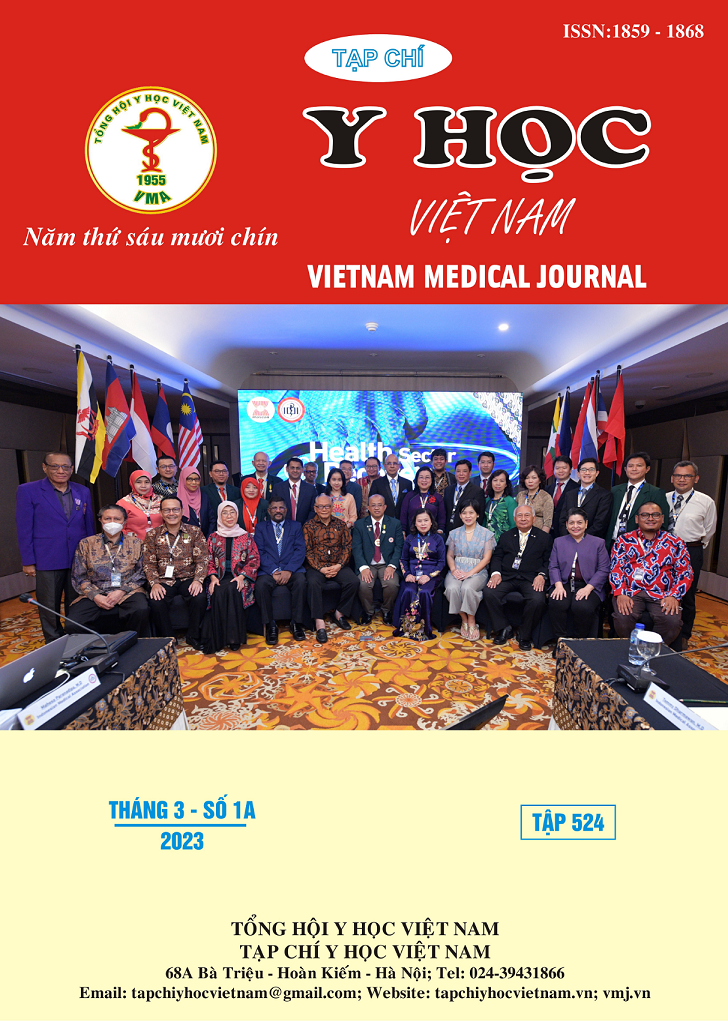ASSIGNMENT BETWEEN RELATIONSHIP HEPATIS C GENOTYPES WITH PARACLINICAL CHARACTERISTICS IN PATIENTS TREATMENT THE CENTER FOR TROPICAL DISEASES, NGHE AN FRIENDSHIP GENERAL HOSPITAL
Main Article Content
Abstract
Background: Hepatitis C virus (HCV) is the main cause of cirrhosis and liver cancer, with a high risk of death. In which, determining the exact genotype of the hepatitis C virus plays an important role in predicting the success of treatment as well as the necessary duration of treatment. Objective: This study was aimed to update the distribution pattern of HCV genotypes and the relationship with subclinical characteristics. Methods: This is a descriptive cross-sectional study. Results: a total of 239 hepatitis C patients who underwent HCV RNA by PCR: The results were 172 (71,97%) HCV RNA (+) cases, 67 (28,03%) HCV RNA (-) cases.The proportion of HCV genotype 1 accounted for the highest rate, accounting for 44,19%, followed by genotype 6 with 42,44%, genotype 3 accounted for the smallest rate of 1,16% and 9,88% of patients could not identify the genotype. There was no association between HCV genotypes and sex and age. Conclusion: Of the four HCV Genotype disorders recorded, genotype 1 accounts for the highest rate. The ralation between HCV genotypes with gender and age is not significant.
Article Details
Keywords
HCV, geneotype, Hepatitis
References
2. MP Cooreman và EME %J Scandinavian Journal of Gastroenterology Schoondermark-Van de Ven (1996), "Hepatitis C virus: biological and clinical consequences of genetic heterogeneity". 31(sup218), tr. 106-115.
3. National Institutes of Health %J Hepatology (1997), "National Institutes of Health Consensus development conference panel statement: management of hepatitis C". 26, tr. 2S-10S.
4. Bộ Y tế (2016), Hướng dẫn " Chẩn đoán và điều trị bệnh viêm gan Vi rút C", chủ biên, Bộ Y tế, Hà Nội.
5. Phạm Bá Chung, Phạm Hùng Vân và Cao Minh Nga (2015), "Sự phân bố kiểu gen HCV và il28b ở bệnh nhân viêm gan C", Tạp chí Y học TP Hồ Chí Minh. 19(1), tr. 4.
6. Nguyễn Hiền Minh và Phạm Hùng Vân (2018), "Tần suất phân bố kiểu gene của siêu vi viêm gan c ở người Việt Nam dựa trên giải trình tự NS5B lượng mẫu lớn", Tạp chí Y học TP Hồ Chí Minh. 22(2), tr. 4.
7. Nguyễn Hiền Minh, Lý Khánh Vân và Lý Văn Xuân (2014), "Tỉ lệ phân bố kiểu gene của siêu vi viêm gan C", Tạp chí Y học TP Hồ Chí Minh. 18(1), tr. 6.
8. Cao Minh Nga và các cộng sự. (2017), "Sự đề kháng kháng sinh của các vi khuẩn gây nhiễm khuẩn đường tiết niệu ở người lớn", Y học TP Hồ Chí Minh. 14(1), tr. 8.
9. Lê Đình Vĩnh Phúc và các cộng sự. (2014), "HCV core antigen ở bệnh nhân nhiễm virus viêm gan C", Tạp chí Y học TP Hồ Chí Minh. 18(1), tr. 8.
10. Srunthron Akkarathamrongsin và các cộng sự. (2011), "Seroprevalence and genotype of hepatitis C virus among immigrant workers from Cambodia and Myanmar in Thailand", Intervirology. 54(1), tr. 10-16.


